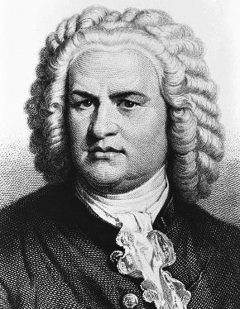The Children's Corner
The Value of Classical Musical Training
Most of us love music. We listen to our playlists, we sing in the shower, and we bop and hum as we drive along. When we listen to certain music we may want to cry; other songs will make us get up and dance. And sometimes we are moved by the desire to make music ourselves.
Of course, you can learn to sing on your own or pick up a guitar and teach yourself to play. But there are some real benefits to structured music programs — be they instrumental or vocal.
Creating music requires us to develop skills and acquire tools to sing or play accurately. A music teacher or organization can facilitate learning to do this. Not only can teachers assist with the technical aspect of playing (such as fingering and posture), but they are also richly knowledgeable in music theory.
Music theory is the study of how music works in terms of rhythm, melodies, and form. Rhythm is made up of beat and tempo. Beat is the foundation of rhythm. It is the steady, repeating pulse in music. When you tap your foot to music at a steady pace, you are tapping the beat. Tempo is the speed of the beat. It indicates how fast or slow the beat is. The placement of specific sounds in a specific order, for a determined duration, and the way the sounds are organized are all aspects of rhythm. Melody is the group of notes or series of pitches that form the tune, or primary voice of music. When you sing a familiar song, you’re likely singing the melody. Harmony is multiple lines of notes that complement the melody. They make it more interesting, but they never overpower it.
Performance of western music repertoire requires a proficiency sight reading and playing with an ensemble. Sight reading is the real time decoding of music theory. It is understanding and executing the information on the score.
Ear training (ability to adjust and correct pitch by ear) is also important for both vocal and instrumental musicians.
Formal vocal training involves developing one’s breathing, intonation, vibrato, rhythm, and tone/timbre, which is something that is hard to do effectively on your own.
Formal, or classical music training doesn’t mean you have to play classical music. Many of today’s performers in all genres have had classical training but have chosen to perform in other areas.
Pop singer Lady Gaga learned piano at a young age and went to the Tisch School of the Arts at NYU. San Diego folk icon, Sam Hinton (March 31, 1917 —September 10, 2009) was given his first instrument, a harmonica, by his classically trained mother at age five. Jazz great Wynton Marsalis went to Julliard and intended to pursue a career in classical music.
Your style is based on the artistic choices you make when you sing or play. For example, you may choose to be a little breathy in a lower register for jazz tune, or you may make the sound sassier, brighter, and more “in your face” if you’re belting a Broadway song. In rock, we don’t sing the words out nearly as fully as we do in an aria–it’s much more conversational. The same is true for an instrumentalist. The tempo, syncopation, or bending of notes are choices you can make once you know your instrument.
The benefits of music study are great. When a musician first learns to read music, she develops a process of recognizing and decoding a complex system of symbols. The musician then translates those symbols into appropriate motor actions that use hands and torso (for wind and vocal musicians) and confirms the accuracy of her actions through multisensory feedback (both sight and sound).
Researchers say that music study touches on all learning domains, including the psychomotor domain (the development of skills), the cognitive domain (the acquisition of knowledge), and, in particular and significant ways, the affective domain (the learner’s willingness to receive, internalize, and share what is learned).
With the assistance of music instruction, students can learn to hear and create music in a way they may never have before.
Carrie Musick Cottriall is executive director of the San Diego Children’s Choir where she oversees the administration, programs and strategic plan of the organization. You can write to her at ccottriall@sdcchoir.org
Because of their training, San Diego Children’s Choir choristers have the tools to pursue a wide variety of musical outlets and the confidence to achieve their goals.







